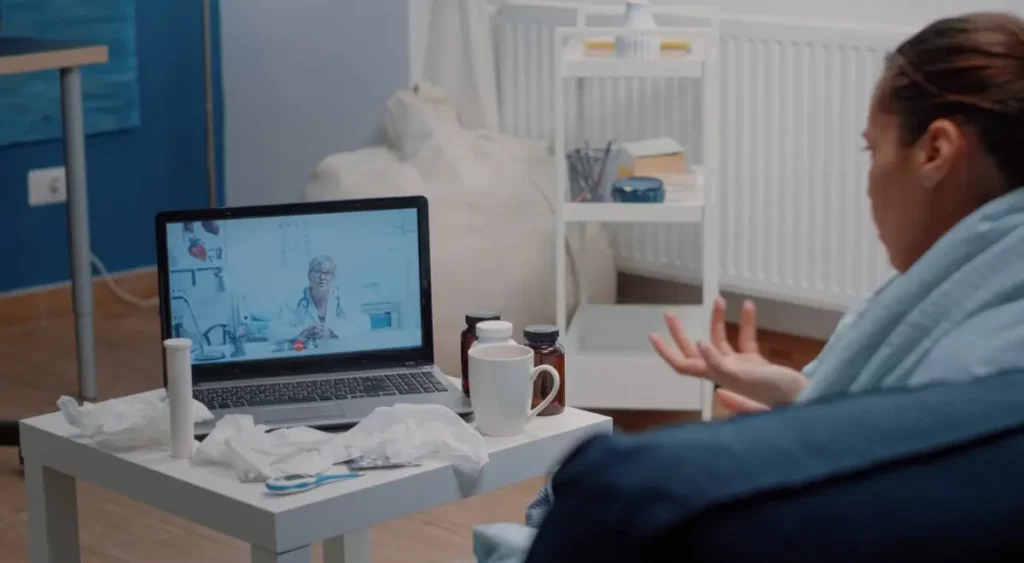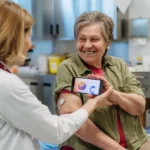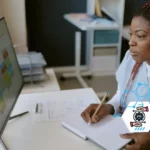The Role of Remote Patient Monitoring (RPM) in Neurological Disorders

Want to reap the benefits of Remote Patient Monitoring (RPM) at your neurology practice? RPM plays a significant role in helping manage the treatment plans and detect potential complications in patients dealing with neurological disorders, such as Epilepsy and Parkinson’s disease. Since these conditions can have a profound impact on a patient’s quality of life, they require continuous monitoring and timely symptom management to avoid emergency hospital visits.
Remote patient monitoring has emerged as a valuable technology in the field of neurology and allows healthcare providers to track patients’ neurological health remotely by provide timely interventions and treatment plans when needed.
In this blog post, we will explore the role of RPM in monitoring patients with neurological conditions , the benefits it offers for patients and healthcare providers, and the potential impact it can have on the management of neurological conditions.
Table of Contents
ToggleRemote Patient Monitoring for Patients with Neurological Conditions
Neurological conditions affect both the peripheral and central nervous systems, reducing general mobility and cognitive functionality in patients, especially those with epilepsy and Parkinson’s disease. RPM can assist healthcare professionals in managing these chronic neurological conditions with:
- Continuous Follow-ups: With regular monitoring and follow-up, a healthcare professional enables the timely detection of deteriorating clinical symptoms and prescribe an improved treatment plan to avoid emergencies and unexpected medical appointments.
- Enhanced Care Coordination: RPM allows the exchange of patient data and health records to reduce the communication barrier between healthcare providers and patients to facilitate medication adherence and treatment, including managing several comorbidities.
- Improved Clinical Results: With remote patient monitoring, healthcare providers can deliver improved clinical productivity and wellness results by automating documentation and reducing travel time for physician office visits.
- Increased Patient Satisfaction: RPM allows patients and care providers in building a positive relationship and foster a sense of connection by staying in constant touch throughout the good and bad health conditions.
How RPM Facilitates Optimal Treatment Outcomes?
Neurological health encompasses a wide range of parameters that need to be monitored regularly to ensure optimal treatment outcomes in epilepsy and Parkinson’s patients. Patients with neurological conditions often require ongoing monitoring of their symptoms, medication adherence, and disease progression.
RPM technology offers a more convenient and cost-effective alternative to traditional or in-office patient monitoring, allowing patients to be monitored remotely from the comfort of their own homes and ensuring a reduced load on healthcare providers as well.
RPM for Parkinson’s Disease
For patients suffering from Parkinson’s disease, remote patient monitoring facilitates:
- Virtual consultations with healthcare specialists
- Remote blood pressure monitoring
- Medication adherence
- Early detection of symptoms
- Send patient health record alerts to healthcare providers
RPM for Epilepsy
For patients suffering from Epilepsy, remote patient monitoring facilitates:
- Care coordination
- Wearable devices to identify seizures, monitoring sleep and physical activity
- Send patient health record alerts to healthcare providers
Benefits of Remote Patient Monitoring in Neurology
- Ensures Real Time Monitoring
One of the key benefits of RPM in neurology is its ability to help healthcare providers manage treatment plans more effectively with real-time monitoring. By continuously monitoring patients’ health, providers can track changes in symptoms or medication adherence and make adjustments to treatment plans as needed. This real-time monitoring allows for customized treatment plans and better patient management.
- Identifies Health Complications
RPM also plays a crucial role in detecting potential complications or disease progression at an early stage. In patients with epilepsy, RPM identifies changes in seizure frequency or severity to make medication adjustments or other interventions. In patients with Parkinson’s disease, RPM identifies changes in motor symptoms or medication side effects, allowing for timely interventions to manage these symptoms effectively.
- Enhances Patient Engagement & Outcomes
Another significant benefit of RPM in neurology is its potential to enhance patient health, engagement, and outcomes. Patients with neurological conditions are often at higher risk for complications or emergencies, such as seizures or falls. RPM allows healthcare providers to monitor patients’ vital signs, activity levels, and other neurological parameters remotely, giving them early warning of potential health risks that may arise in coming days. This early detection can help prevent emergencies and improve patient safety, allowing patients to live more independently and confidently.
- Manages Physicians’ Caseloads
By remotely monitoring patients’ neurological health, providers can more efficiently manage their caseloads and prioritize care for patients who need it the most. This proactive approach to care can lead to better outcomes for patients and reduce healthcare costs by preventing hospitalizations or emergency room visits.
Conclusion
Overall, the role of RPM in neurology is rapidly expanding and revolutionizing the way neurological conditions are managed. By enabling remote monitoring to identify patients’ symptoms, medication adherence, and disease progression, RPM delivers a more convenient and personalized approach to care.
By allowing patients to actively participate in monitoring their health and sharing data with their healthcare providers, RPM can help patients take control of their condition and make informed decisions about their treatment plans.
As remote healthcare technology continues to advance, RPM will likely play an increasingly important role in the management of neurological conditions, ultimately leading to better quality of life for patients with complex neurological disorders.
Improve Neurological Care Outcomes With HealthArc
Boost your patient’s clinical results and neurological care outcomes with HealthArc’s advanced RPM clinical software and digital health platform focused on smooth patient transition, seamless communication, and enhanced overall patient engagement, ensuring optimal outcomes for both l patients and healthcare providers.
Request a free demo or feel free to talk to our team at +201 885 5571 to learn how we can help you manage epilepsy and Parkinson’s disease with RPM.
Frequently Asked Questions (FAQs)
People with Parkinson’s disease and epilepsy can especially benefit from RPM. Monitoring helps keep track of changes in symptoms, motor function, seizure frequency, medication adherence, and complications that happen early on.
With RPM, you can keep following up with patients, find out about worsening symptoms sooner, coordinate care better, and introduce changes to medications from a distance. This means fewer trips to the emergency room, a better quality of life, and more personalized care plans.
For people with Parkinson’s, RPM helps with virtual visits, keeping an eye on vital signs like blood pressure, keeping track of early symptoms like tremors or changes in motor function, making sure people take their medications, and letting providers know when alerts show that symptoms are getting worse.
In epilepsy, RPM aids in care coordination by utilizing wearable devices to detect seizures, monitoring sleep and physical activity, and alerting providers when health record indicators indicate risk. This helps keep people from going to the hospital unexpectedly and makes it possible to act quickly.
- Monitoring neurological symptoms in real time
- Find health problems early on
- More involvement and satisfaction from patients
- Lessening doctors’ workloads by prioritizing patients who need the most care
- Lets patients stay at home more comfortably while still getting medical care
PCM (Principal Care Management): For managing one serious, high-risk chronic condition with focused care. CCM (Chronic Care Management) is a way to manage two or more chronic conditions by coordinating care in a more thorough way.
HealthArc and other platforms follow HIPAA and SOC-2 rules. Data is encrypted and sent safely, and only authorized providers can get to it. Patients give informed consent, especially when they have sensitive conditions like neurological disorders.
It can be challenging, especially when it comes to setting up workflows, training staff, picking reliable devices, and connecting with EHRs. But with the right vendor support (like HealthArc), implementation can go smoothly.
No. Technology works well with human care. RPM takes care of monitoring, alerts, and data transfer, but clinical judgment, in-person assessments, and talking to patients in person are still crucial.
- Physiological vitals like blood pressure, heart rate, and glucose levels
- Activity levels
- Metrics from wearables
- Seizure or motor event logs (for neurology)
- Sleep and sensor data
- Medication adherence
Yes. HealthArc supports interoperability through modern standards like HL7/FHIR. This lets RPM data flow into electronic health records and clinician workflows.
Yes, HealthArc has strong security measures in place to protect patient privacy. These include following HIPAA rules, meeting SOC-2 standards, sending data securely, and giving people access based on their roles.
Many state Medicaid programs, Medicare, and many private insurers pay for RPM. Coverage depends on following the rules for documentation, devices, time spent, and using the right CPT/HCPCS codes.
Yes. As long as they keep separate and accurate records of the time and requirements for each service, providers can bill for both CCM and RPM in the same month.
According to payer and CMS rules, billing providers (doctors, nurse practitioners, or qualified health professionals) are in charge of overseeing clinical staff like nurses or care coordinators who keep an eye on data and handle alerts.
Most Recent Blogs
Categories
Related Blog
- October 23, 2025 | Read Time: 12 mins
How RPM Devices Improve Hypertension and Diabetes Outcomes in Medicare Populations
Remote patient monitoring (RPM) is transforming chronic care for Medicare beneficiaries. CMS...
Learn More- August 25, 2025 | Read Time: 13 mins
How Can “One Big Beautiful Bill” Boost RPM Programs by $50B?
The “One Big Beautiful Bill,” signed July 4, 2025, directs $50B over...
Learn More- August 22, 2025 | Read Time: 17 mins
HealthArc Platform vs RPM Software Solutions
Is your healthcare organization trying to pick a remote patient monitoring solution?...
Learn More


